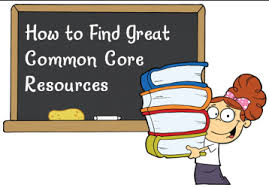Parent and Student Resources

What are Common Core State Standards?
In 2009, a national effort began to standardize standards across the United States. The Council of Chief State School Officers (CCSSO) and the National Governors Association Center for Best Practices (NGA) committed to developing a set of standards that would help prepare students for success in career and college. The Common Core State Standards (CCSS) Initiative resulted in the creation of common standards for English-language arts and mathematics, kindergarten through grade twelve. The standards are founded upon the best state standards; the experience s of teachers, content experts, and leading thinkers; and feedback from the general public. In addition, the standards are internationally benchmarked to the top performing nations to ensure that our students are globally competitive. Parents, educators, content experts, researchers, national organizations, and community groups from forty-eight states, two territories, and the District of Columbia all participated in the development of the standards. The CCSS are rigorous, research-based, and relevant to the real world. On august 2, 2010, the California State Board of Education (SBE) voted and adopted the CCSS.
Links to information on the Common Core State Standards
Testing and Accountability
Students in grades 3-8 are tested on the Common Core State Standards in English and Language Arts and Mathematics through the California Assessment of Student Performance and Progress (CAASPP). Below are several links to information and videos on CAASPP testing.
UNIFORM COMPLAINT PROCEDURES
Uniform Complaints Pamphlet.docx (DOCX)
Uniform Complaint Procedures.docx (DOCX
Uniform Complaint Form.docx (DOCX)
SERVICES FOR CHILDREN AND YOUTH EXPERIENCING HOMELESSNESS
Rights of Eligible Children and Youth
Right to Immediate Enrollment
Right to remain in school of origin
Right to receive transportation to and from the school of origin
Right to receive supports for academic success
Who Qualifies for Services?
Students who lack a fixed, regular, and adequate nighttime residence which includes:
Shared housing due to loss of housing or economic hardship
Living in cars, parks, RV park, campsite, or similar location
Living in a hotel or motel
Living in a homeless shelter or transitional housing
Living in a residence with inadequate facilities, e.g., no water, no heat, no electricity, no plumbing, or infestation.
Living in an encampment or on the street
Living in a shed or unconverted garage
Migratory children living in the above circumstances
Unaccompanied Minors, i.e, children and youth, not in the physical custody or a parent or court-appointed guardian.
Follow this link for further information.
ANNUAL NOTICE TO PARENTS
Annual Notice to Parents Eng..pdf (PDF)
Annual Notice to Parents Spanish.pdf (PDF)
INDEPENDENT STUDY 2021-22
Please click the following links in English and Spanish for information on Independent Study program options for 2021-22
SELPA 2021-22 Local Plan
Flattened 2021-22 Local Plan Section D ABP_05-20-21 (CDE FINAL).pdf (PDF)
Flattened 2021-22 Local Plan Section E Annual Service Plan (GC Meeting May 20).pdf (PDF)
Flattened Monterey County SELPA Local Plan Section B Revision 2021 (GC Meeting May 20).pdf (PDF)
CHILD FIND - SPECIAL EDUCATION
San Ardo Union Elementary School District seeks to find and serve all students living within its district boundaries who may have Special Needs and require Special Education. If you believe your child between the ages of 0 - 21 may have Special Education needs, please contact the District at 831-627-2520.
California Education Code 56300: A local educational agency shall actively and systematically seek out all individuals with exceptional needs, from birth to age 21 years of age, inclusive, including children not enrolled in public school programs, who reside in a school district or are under the jurisdiction of a special education local plan area or a county office of education.
